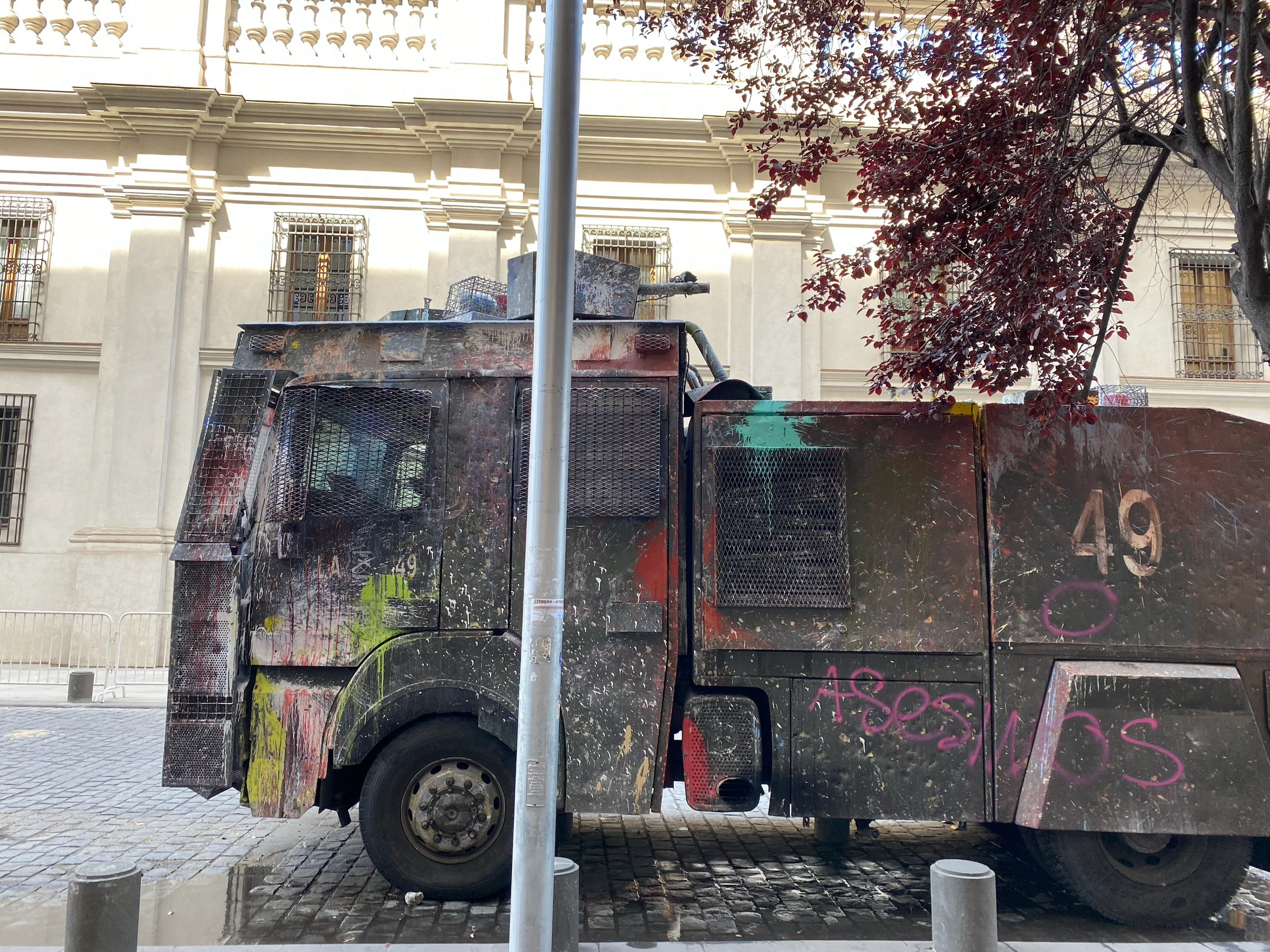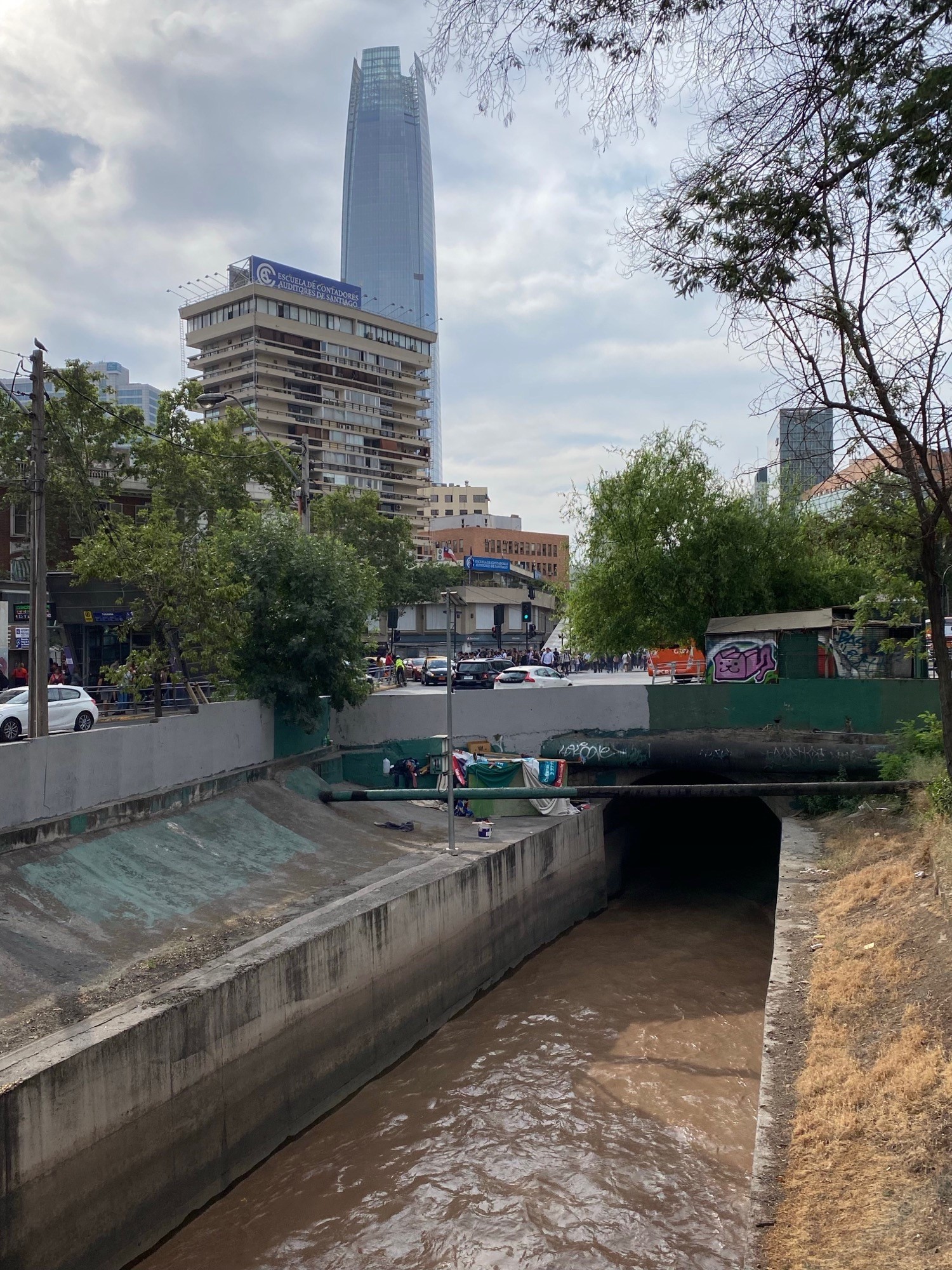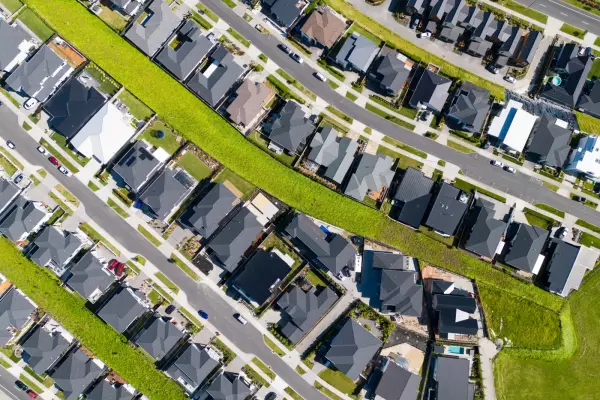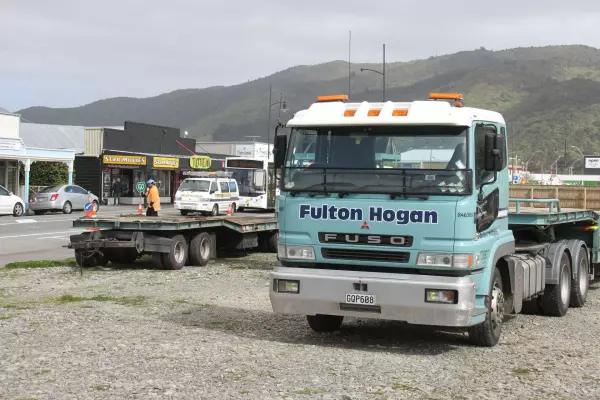Chile erupts: a first-hand account from Santiago

Photo credit Valentin Farro
BusinessDesk’s Rebecca Howard had expected to see the signing of a mini-trade deal between US President Donald Trump and China’s Xi Jinping at the APEC leaders’ summit in Chile. That was put on ice when social unrest broke out and the marquee global event was cancelled for the first time. She pressed on with plans to investigate the NZ-Chile relationship and found a nation waking up to its own social inequality
The smell of smoke and acrid tear gas hangs over downtown Santiago as a month of protests that have wracked up more than US$4.5 billion of damage and left more than 18 people dead show no sign of abating.
“We aren’t tired of protesting. We are tired of living badly,” said one university student as she joined a teeming multitude for a national strike on a hot November day in the Plaza Italia in the central city.
“We need a new constitution. It’s time for change. This constitution was written by a military government to protect themselves. It doesn’t mean anything to us.”
The current constitution – which has been reformed several times – dates back to 1980 when military dictator Augusto Pinochet was in power.
Another young woman, a 23-year-old tourist guide, told us “we are the ‘nothing to lose generation’. This system gives us nothing, so we have nothing to lose if we bring it down. In fact, things will be better.”
The demands are common: access to healthcare, access to education, access to millions deposited in private pension systems and a new Magna Carta. Chileans from different walks of life all talk about a deeply rooted social inequality that needs to be addressed.
Some people said they weren’t surprised the protests happened given the social backdrop; what was surprising was how long they have lasted.
Miguel, a waiter, said it would be hard to stop now that people have “woken up.”
Chile, with a population of 18 million, seven million in the capital, is not unfamiliar with protests. In recent years, high school and university students have taken to the streets to bring about change. But this is the first protest in history that has cut across traditional divides. One of the early marches in Santiago brought more than one million people.
“My boss even went to the protests, which impressed me,” said one young woman who works for a business council.
The movement is largely leaderless and organised through social media, with protestors called to meet by different hashtags. This has created a variety of challenges as there is literally no one to negotiate with.
There are, however, two sides to the protests. Day-time protests are largely peaceful, marked by colourful flags, chanting, beating drums, blowing whistles and horns.
Several blocks from Plaza Italia near Plaza de La Moneda – the seat of government - the vibe is different. Masked young people hurl objects at the Carabinero police who retaliate with everything at their disposal, including water cannons, rubber bullets and tear gas that is temporarily blinding and makes breathing a challenge.
“Make sure you are out of here by 5 o’clock. Things start to turn ugly when it gets dark,” one protestor warned.
As dusk falls, hooded, masked protesters cause mayhem and destruction in cities across the country and Tuesday was no exception. The Plaza Italia and the road to the government palace resemble a war zone.
“I’ve been to Caracas, Ecuador, Peru, and Santiago was by far the most modern, beautiful city. Not anymore. It’s terrible what they have done. I’m in favour of why they are protesting, but not the violence,” said Luis, a Venezuelan Uber driver.
Once elegant colonial buildings are covered in graffiti and barricaded with plywood. The streets are littered with broken glass, traffic lights are out of commission, bus stops have been reduced to rubble and scores of metro stations have been damaged, including seven destroyed by fire.
Damage also includes torched and ransacked churches, supermarkets and even hotels as well as public buildings.
The government’s initial response was to clamp down hard and fast, which only served to fuel the fire.
“Imagine what that was like for my parents who lived through the military dictatorship. They never thought anything like that would happen again,” a young masked man who cycled across the city to join the protests said.
About 6,000 people have been arrested and more than 2,000 hospitalised, according to figures from the National Human Rights Institute. More than 18 people have been killed. There are scores of accusations of human rights violations.
Tuesday’s national strike marked one of the most violent days so far. Enrique Monras, head of the Western Metropolitan Zone for the Carabinero police forces, said one person was killed and 46 civilians were injured in different parts of the country. More than 300 police officers were injured and 19 police stations attacked.
Some 95 different buildings were ransacked, including churches, several hotels, supermarkets, pharmacies and even private apartments as fires raged in different cities.
The protests were initially sparked when President Sebastian Pinera announced a US4 cent fare hike for public transport, but that was the straw that broke the camel’s back.
Despite Chile’s previous reputation as a poster child for Latin American economic performance, more than 50 percent of the population earned less than 400,000 pesos, or around NZ$800, per month in 2018, according to the National Statistics Institute. A 40-hour week on New Zealand’s minimum wage would see someone pocket NZ$2,832 in a month.
A professor from the University of Chile said it’s impossible to study or get ahead on that amount of money. University fees would be around 5 million pesos - about NZ$10,000 - a year and most students are forced to get loans.
“They end up so heavily in debt that they spend their whole professional lives paying for their careers,” he said.
According to Claudio Sapelli, professor at the Economics Institute of the Pontifical Catholic University, the protests are largely concentrated among middle-class young people.
“That’s a very difficult question,” he said, when asked why the protests erupted now. Among other things, “recent low economic growth may be part of the problem,” he said.
Until recently, Chile was considered one of the most stable economies in the region, marked by annual growth of more than 5 percent. That is no longer the case and “that generates a series of challenges,” he said.
Protesters say the country’s constitution is at fault. They claim it created the framework for the nation’s market-driven model that led to the privatisation of pensions, healthcare and education as well as basic services like water.
Under the current private pension system – created by the military regime – Chileans are obligated to contribute 10 percent of their salaries but say they retire with a pittance.
“I paid into the AFP my whole life. It’s obligatory. That should be my money, not to mention the interest. Instead, I have retired with 100,000 pesos. I can’t pay for anything with that,” said one retired health care worker who was marching with her entire family.
Luis, a waiter in a restaurant in Las Condes, an upscale district marked by tree-lined streets and an eerie peace that feels like a different country, said the low pensions put immense pressure on the elderly.
“Chile has one the highest suicide rates among elderly people,” he said. Official data showed the highest suicide rate per 100,000 residents was among people over the age of 80.
In a bid to restore order, President Pinera has announced a new social agenda that included heftier taxes for the rich and higher pensions.
In the wake of Tuesday’s national strike, he called for peace - an “accord for justice” - that would make it possible to create a “Chile with more equity and less abuse, a Chile with greater equality of opportunities and less privileges.”
He also agreed to an “Accord for a New Constitution” with clear and effective pubic participation. The details have yet to be ironed out.
Financial markets, however, have been well and truly spooked. The Chilean peso is trading at historic lows and the stock market has tumbled some 15 percent since the first protesters took to the streets.
Chile’s central bank said it would take measures to ensure liquidity in the financial system. The bank will offer US$4 billion of 30-day and 90-day currency swaps, to ease liquidity in both the peso and the dollar. The measures will continue until Jan. 9.
The economy has been hard-hit, with hundreds of central city businesses shutting up shop for fear of being ransacked and the most exclusive shopping centres are closing early every day just as the Christmas season kicks off.
Several people said they are worried about losing their jobs as the strikes continue. Tourist attractions like the Santiago cable car, for example, were closed for several days.
“The dollar is falling because a lot of people are pulling their money out of Chile. International funds are taking their money, some business people are taking out their money, people who never would have taken money abroad, are taking it abroad,” professor Sapelli said.
“There will be less investment, less employment. This could be a very dangerous vicious cycle. This quarter is going to be very bad and the first quarter next year might be bad as well. People are now saying that Chile may go into recession, just because of this situation.”
Comments











